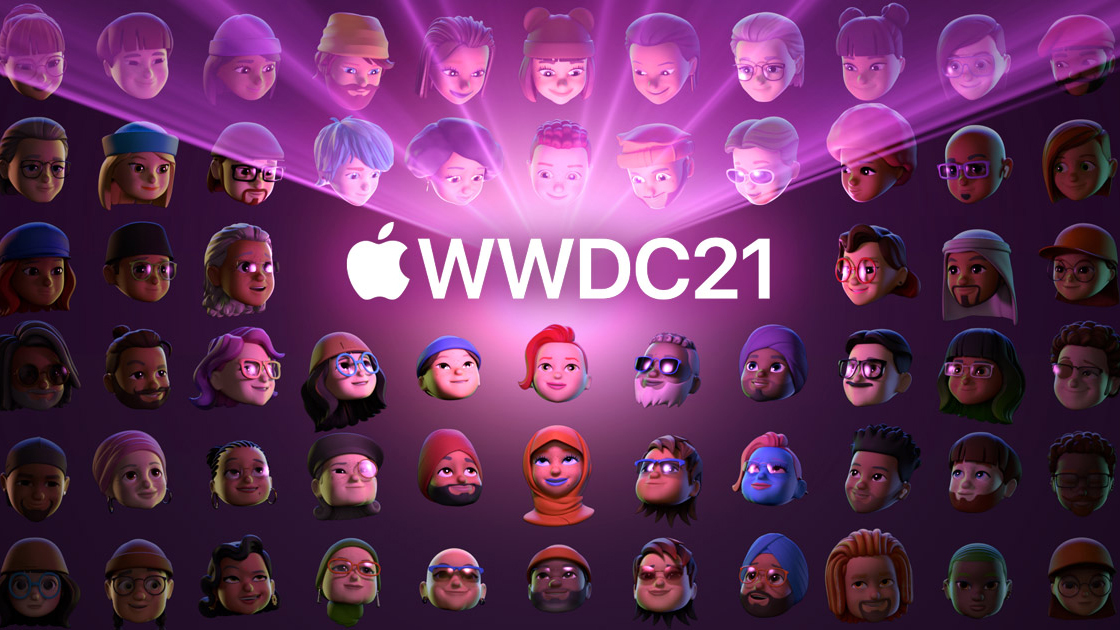Apple WWDC: Tech Giant Makes Co-Viewing Core Part of Screen Experience
The co-viewing technology, which Apple calls SharePlay, and related new sharing features for FaceTime and Messages give Apple a chance to keep up with one of the pandemic’s hottest trends

Apple said it will make the process of jointly sharing video, music and other entertainment and presentations easier, and will partner with a number of big media services such as DIsney Plus, Paramount Plus, and HBO Max to enable such co-viewing of their programming directly through its devices.
The announcement was one of dozens of enhancements to Apple’s newest MacOS version, to be called Monterey, and operating systems for its other devices, as part of its 115-minute opening presentation today launching the week-long Worldwide Developers Conference (WWDC).
The Apple TV app will get a new Shared With You on-screen widget for keeping track of shows suggested by friends, and an “All of You” space in the streaming interface will suggest family-friendly shows likely to appeal to everyone watching.
The tech giant also said it will beef up content sharing through its Messages app, improve its Safari browser handling of tabs, and add head tracking and spatial audio streams through Apple TV devices for those listening with its headphones. Beginning today, Dolby Atmos will be available for tracks on Apple Music.
This year’s WWDC presentation was expected to be more evolutionary than revolutionary, and it lived up to those modest expectations. It came after a year and a half of pandemic limitations, and builds on last year’s two generational shifts, to 5G-enabled iPhones and to Apple Silicon CPUs for its computers, the same Apple-designed chip family that already runs all its other devices.
The co-viewing technology, which Apple calls SharePlay, and related new sharing features for FaceTime and Messages give Apple a chance to keep up with one of the pandemic’s hottest trends.
Companies such as Zoom and startups such as Scener and mmhmm.com have offered entertainment outlets and big conferences such as San Diego Comic-Con, VidCon and the Fantastic Fest film festival much more attractive and flexible platforms to jointly share with large groups remote streams of video, music, presentations, business meetings, fan events, and much else.
NEXT TV NEWSLETTER
The smarter way to stay on top of the streaming and OTT industry. Sign up below.
FaceTime has long enabled free internet-based video calls, but has generally been limited by its Apple-first focus, and by its lack of sophisticated sharing features. Today’s announced additions could substantially change that, for all kinds of shared entertainment experiences.
“You can bring that album right into the conversation,” said Craig Federighi, Apple senior VP, software engineering, during a short demonstration. “You can press play and listen together. It will start in synch for everyone. Everyone can add songs to a shared control. You can jump to a streaming app and press play, watching video totally in synch. It works fluidly through the whole system.”
If people don’t want to talk over playback of a video or music, they can jump into Apple’s Messages app and keep the conversation going there, Federighi said. They also can “throw” the video playback to watch on a bigger screen while still using their original device.
“We want to make sure you have a ton of incredible experiences,” Federighi said.
The company briefly showed a screenful of logos from partner media companies already in place to use the software with their streaming content, including Disney Plus, Paramount, HBO Max, the NBA, Twitch, TikTok and Master Class.
The technology will also be enhanced for non-entertainment uses, with a new grid view that shows both the current speaker and the reactions of other listeners, much as most current teleconferencing systems such as Zoom already do.
Related new technologies announced at WWDC include the ability to schedule FaceTime gatherings with others, even on Windows and Android devices outside the Apple ecosystem.
The company is also making available APIs, or application programming interfaces, that will allow developers to plug their services into the FaceTime stream-sharing functions. Together, those will be handy for setting up co-viewing events for larger groups using devices from a variety of makers beyond Apple’s carefully tended walled garden.
Improvements to Messages include a Shared With You component that will include related stories, video, music, contact information and other details when someone shares a media link on the messaging app.
Other notable improvements include substantially more detailed and attractive Maps; the ability to add ID cards such as driver licenses to Wallet; enhancements that let people with mild hearing loss use AirPods to better hear conversations; new Health app functions, including a steady-walking metric, sharing lab results with doctors, and tracking trends; more secure Safari browsing; new Tai Chi and Pilates workouts in Fitness+; a meditative Reflect app for Apple Watch; and the ability to incorporate the Siri digital assistant in devices from third-party companies.
The company also took a couple of minutes to talk about the App Store, recently the subject of great controversy, regulatory concern, and a hugely consequential antitrust lawsuit from Epic Games that just concluded in-court proceedings.
Apple aid it has already paid out $230 billion to App Store developers, and has more than 600 million weekly App Store visitors worldwide. The store will give developers new options for their product pages, to better showcase app capabilities, and functions to notify users of in-app purchases and limited-time events
Apple executives said beta versions of the new operating systems are available immediately for developers, with public beta versions available in July. Final versions of new operating systems and functions will be available to all users “in the fall.”
David Bloom of Words & Deeds Media is a Santa Monica, Calif.-based writer, podcaster, and consultant focused on the transformative collision of technology, media and entertainment. Bloom is a senior contributor to numerous publications, and producer/host of the Bloom in Tech podcast. He has taught digital media at USC School of Cinematic Arts, and guest lectures regularly at numerous other universities. Bloom formerly worked for Variety, Deadline, Red Herring, and the Los Angeles Daily News, among other publications; was VP of corporate communications at MGM; and was associate dean and chief communications officer at the USC Marshall School of Business. Bloom graduated with honors from the University of Missouri School of Journalism.

